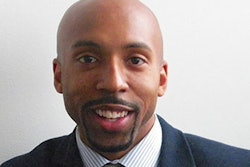Community colleges have taken great pride over many decades as an open-door institution welcoming students who had no other place to go. They have created special programs for students who are under-served, at risk, first generation, Black males, women, migrants, and prisoners. The open door leads to safe houses for these students, but all minority groups have not been welcomed with open arms or perhaps colleges do not know how to deal with The Neglected Minority — LGBTQ students and students experiencing homelessness. The conference programs of AACC, League for Innovation, and NISOD were analyzed in a 2023 study by the author using Google Word count to determine the extent to which the hundreds of sessions in these programs reflected interest in The Neglected Minority.
LGBQT students
There is a growing interest and literature about LGBTQ students. In a survey by the Association of American Universities of 180,000 college students, 17% identified as gay, lesbian, bisexual, asexual, queer, or questioning. It is not known how many of these students are enrolled in community colleges, but it is likely these students are represented equally to those in universities.
 Dr. Terry O'Banion
Dr. Terry O'Banion
The Trevor Project is the world’s largest suicide prevention and mental health organization for lesbian, gay, bisexual, transgender, queer & questioning young people. In the project's 2022 survey of 34,000 LGBTQ youth between ages 13-24, the following results answer why it is important for educators to be concerned about these students:
• 45% considered suicide in the past year.
• 14% attempted suicide in the past year.
• 73% experienced symptoms of anxiety.
• 58% experienced symptoms of depression.
• 73% experienced discrimination.
• 36% reported they had been physically threatened or physically harmed.
• 82% wanted mental health care.
• 60% of those wanting mental health care could not get it.
While the issues and challenges related to LGBTQ students in higher education have become a national concern, the study of the three community college conference programs revealed that the term LGBTQ did not appear one time. However, the term mental health appeared 46 times, which may reflect some of the interest of community college educators in LGBTQ and homeless students.
Homeless students
Homeless youth face many barriers to academic success and degree completion in the post-secondary environment. Homelessness itself can be highly destabilizing, even traumatic, with effects on a student’s physical, mental, financial, and academic wellbeing. The overall context of poverty in which homelessness usually occurs brings with it a steady barrage of stressful conditions including lack of access to adequate nutrition and healthcare and unsafe, often overcrowded living conditions. Further, many college-bound students in homeless situations have not had anyone in their lives to serve as an educational role model, providing valuable support and information along the student’s path to college. They often arrive to college feeling out of place, questioning whether they belong or if they have what it takes to be successful.
California is a microcosm of homelessness for community college students. “Nineteen percent of respondents who participated in a 2019 California Community Colleges #RealCollege Survey conducted by The Hope Center for College, Community and Justice at Temple University said they were homeless at some time during the previous year. Sixty percent of respondents said they had experienced housing insecurity — which includes an array of challenges that include an inability to pay rent or utilities, not having a place to stay or needing to move frequently — within the previous year. Nearly 40,000 students from 57 California community colleges participated in the survey, and 7-in-10 students said they had experienced food or housing insecurity during the previous year.”
Despite national attention and considerable research on homelessness among college students, this study revealed that the term homeless appeared only five times in the three community college conference programs. The terms food insecurity and housing insecurity appeared once for each term. The results of this gauge are disturbing and suggest that community colleges need to become more aware and active in addressing the special needs of The Neglected Minority.
Dr. Terry O’Banion serves as senior professor of practice at Kansas State University and is a member of the K-State Community College Leadership Program Advisory Board. He is president emeritus, League for Innovation in the Community College.
The Roueche Center Forum is co-edited by Drs. John E. Roueche and Margaretta B. Mathis of the John E. Roueche Center for Community College Leadership, Department of Educational Leadership, College of Education, Kansas State University.
















